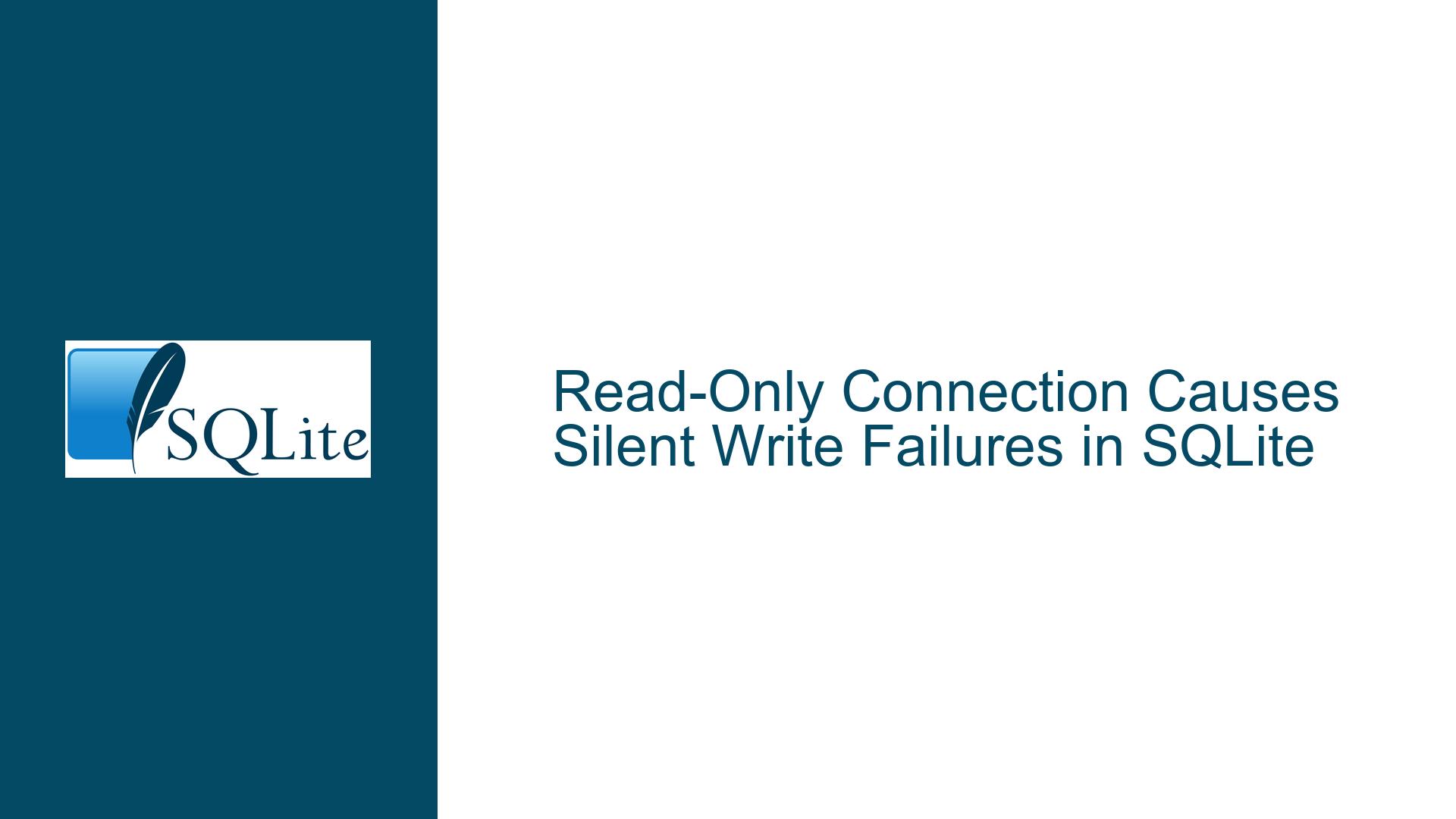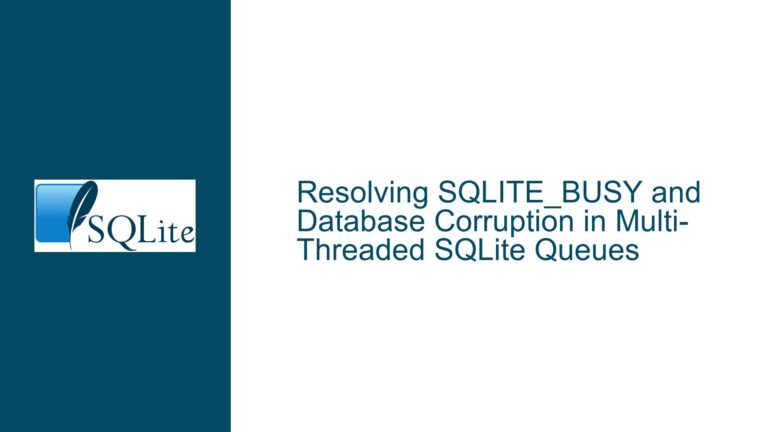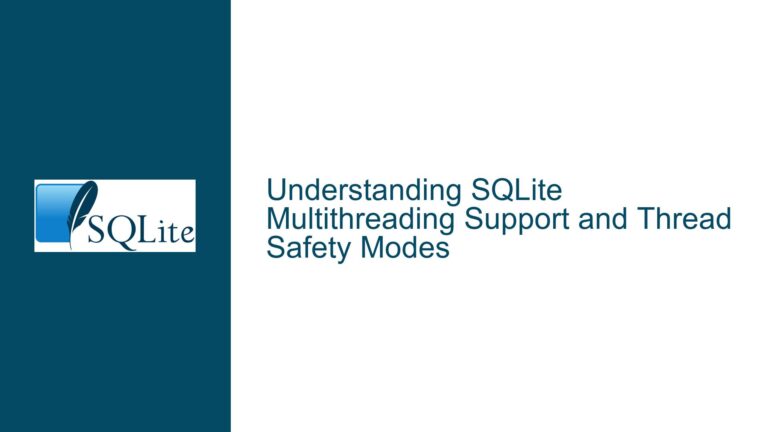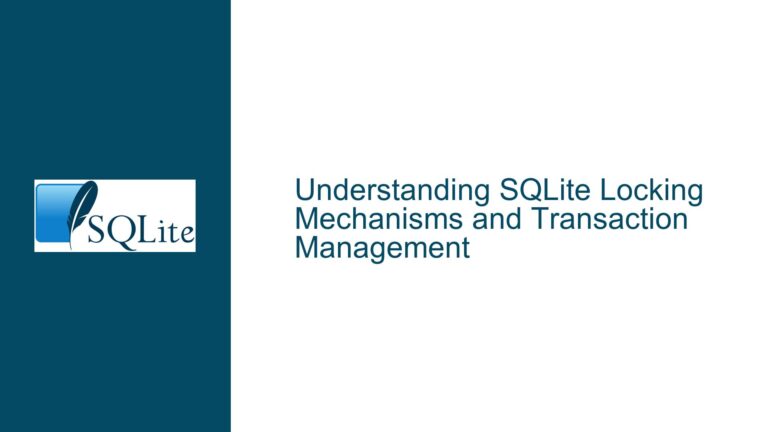Read-Only Connection Causes Silent Write Failures in SQLite
Read-Only Connection Interference with Write Operations
The core issue revolves around a scenario where a read-only connection to an SQLite database interferes with subsequent write operations, causing them to fail silently. Specifically, when a read-only connection is actively executing a query, a second connection attempting to write to the same database appears to succeed but does not actually modify the database. This behavior is observed when the first connection is paused mid-query, and the second connection attempts to insert data. The issue manifests as the second connection repeatedly returning the same rowid for what should be new rows, indicating that the write operations are not being committed to the database.
The problem is particularly insidious because the second connection does not throw any errors or warnings, making it difficult to diagnose. The behavior only resolves when the first connection completes its query, after which the second connection can successfully write to the database and return new rowid values as expected. This issue is exacerbated when the database’s journal_mode is set to TRUNCATE, which affects how SQLite handles locking and transaction rollbacks.
Misconfigured Locking Mechanisms and Transaction Rollbacks
The root cause of this issue lies in SQLite’s locking mechanisms and how they interact with read-only and read/write connections. SQLite uses a file-based locking system to manage concurrent access to the database. When a read-only connection is active, it acquires a shared lock, allowing other read-only connections to access the database simultaneously. However, when a read/write connection attempts to modify the database, it must acquire an exclusive lock, which is incompatible with the shared lock held by the read-only connection.
In this scenario, the read/write connection is unable to acquire the exclusive lock because the read-only connection is still holding the shared lock. Instead of failing outright, the read/write connection enters a state where it appears to succeed but does not actually commit the changes to the database. This is likely due to the transaction being rolled back silently, as the read/write connection cannot secure the necessary locks to complete the write operation. The journal_mode setting of TRUNCATE further complicates this by reducing the granularity of lock management, making it more difficult for the read/write connection to detect and handle the lock conflict.
Additionally, the use of coroutines in the script introduces another layer of complexity. Coroutines can alter the timing and execution flow of database operations, potentially exacerbating lock contention issues. The combination of these factors creates a perfect storm where the read/write connection fails silently, leaving the database in an inconsistent state.
Diagnosing and Resolving Silent Write Failures
To address this issue, a multi-step approach is required to diagnose and resolve the underlying causes. The first step is to ensure that the read-only connection releases its shared lock in a timely manner. This can be achieved by optimizing the query execution time or breaking the query into smaller chunks that can be processed more quickly. Additionally, the use of coroutines should be carefully evaluated to ensure that they do not introduce unnecessary delays or lock contention.
The second step is to modify the read/write connection to explicitly handle lock conflicts. This can be done by implementing retry logic that attempts to acquire the exclusive lock multiple times before giving up. If the lock cannot be acquired, the script should log an error and exit gracefully, rather than silently rolling back the transaction. This approach ensures that any lock conflicts are detected and handled appropriately, preventing silent failures.
The third step is to review the database’s journal_mode setting and consider alternative modes that provide better lock management. For example, switching to WAL (Write-Ahead Logging) mode can improve concurrency and reduce lock contention, as it allows read and write operations to occur simultaneously without blocking each other. However, this change requires careful testing to ensure compatibility with the existing application and environment.
Finally, it is essential to thoroughly test the modified scripts and database configuration to verify that the issue has been resolved. This includes simulating the original scenario with a paused read-only connection and verifying that the read/write connection can successfully modify the database and return new rowid values. Additionally, stress testing should be performed to ensure that the system can handle high levels of concurrent access without encountering lock conflicts or silent failures.
By following these steps, the issue of silent write failures caused by read-only connection interference can be effectively diagnosed and resolved. The key is to understand the underlying locking mechanisms and transaction rollbacks, and to implement appropriate safeguards to handle lock conflicts and ensure data consistency.






